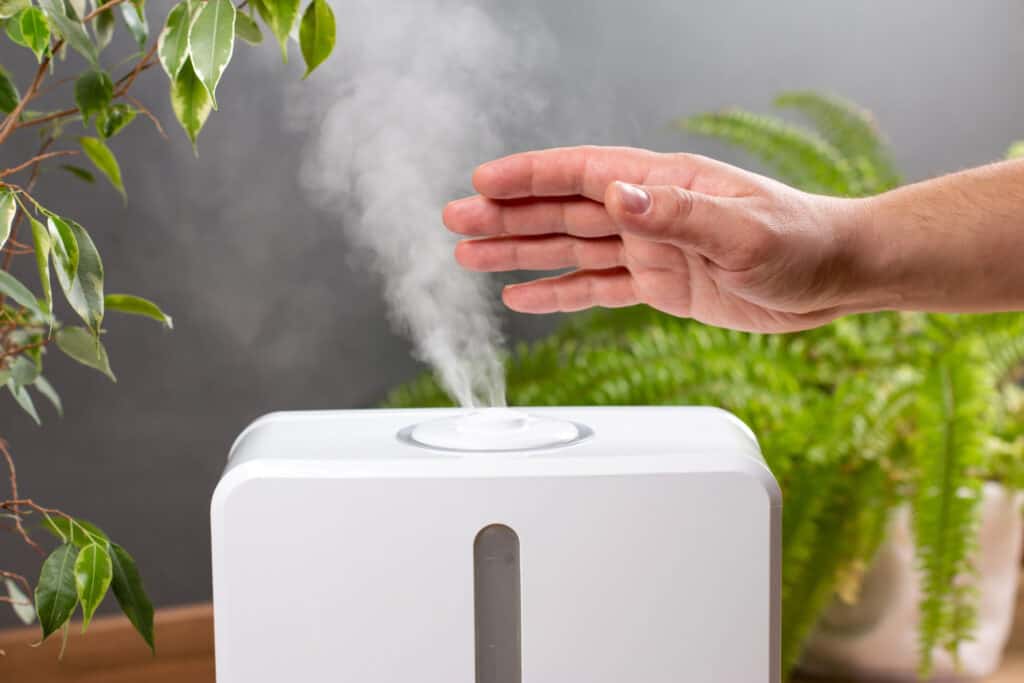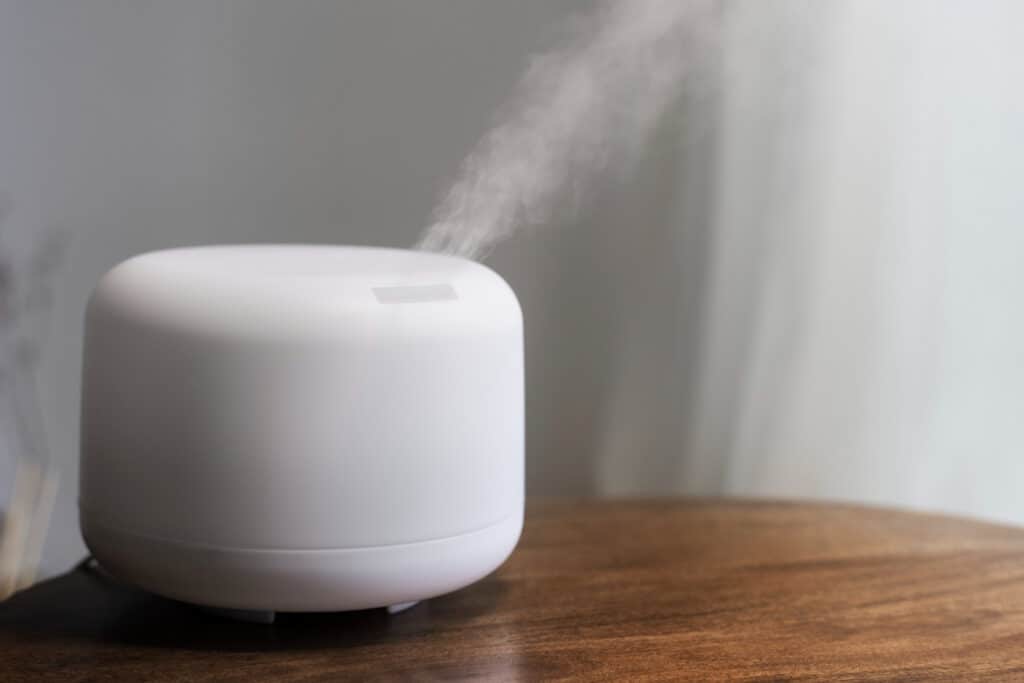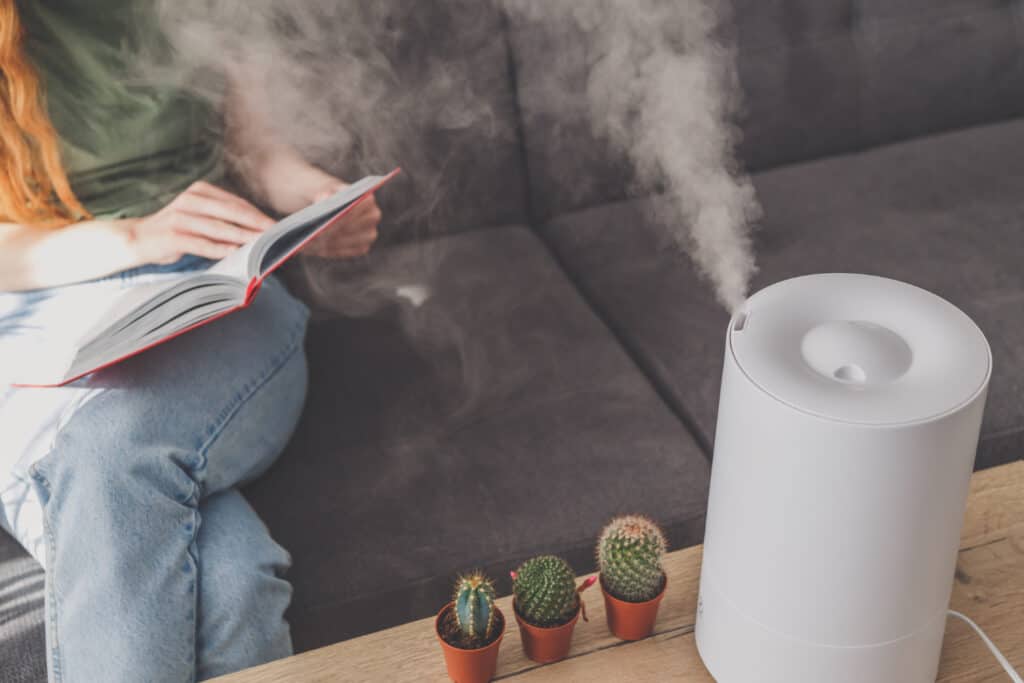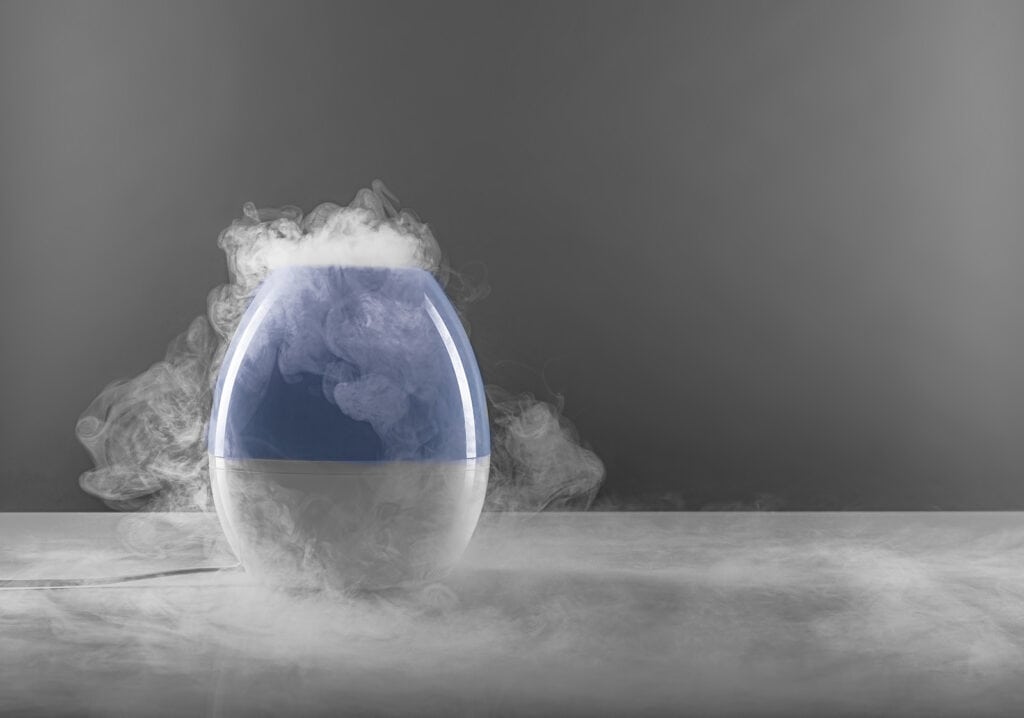Humidifier Electricity Use
As someone who values comfort and the well-being of my family, I've come to appreciate the importance of humidifiers in our household. They've become essential appliances, helping us maintain the perfect indoor humidity levels for our comfort and health.
Yet, like any responsible homeowner, I've also been curious about the impact these devices have on our electricity consumption and, ultimately, our energy bills. In this comprehensive guide, I'll share what I've learned about how humidifiers use electricity, including the factors that influence their consumption and some practical tips to make sure we're optimizing their energy efficiency.
The Basics of Humidifiers
To comprehensively explore the topic of humidifier electricity usage, it's essential to begin with a solid understanding of humidifiers and their significance in indoor environments.
Humidifiers serve a crucial role in maintaining optimal indoor air quality by increasing the moisture levels in a room or designated space. These devices are designed to counteract dry air conditions, which can have various adverse effects on health and comfort. Dry indoor air can lead to several problems, including but not limited to:
- Dry Skin: Low humidity levels can cause the skin to lose moisture, leading to dryness, flakiness, and irritation.
- Irritated Throat and Eyes: Insufficient humidity can result in a scratchy throat, itchy eyes, and discomfort when breathing.
- Respiratory Issues: Dry air can exacerbate respiratory problems such as asthma, bronchitis, and allergies, making it more difficult to breathe comfortably.
- Cracked Furniture and Flooring: Lack of moisture in the air can also have adverse effects on wooden furniture and flooring, causing them to crack or warp.
- Static Electricity: Low humidity levels can lead to an increase in static electricity, resulting in annoying shocks and damage to electronic devices.
- Reduced Immune Defense: Dry air can impair the body's natural defense mechanisms, making individuals more susceptible to illnesses.

How Do Humidifiers Work?
To gain a deeper understanding of humidifier electricity usage, it's essential to explore how these devices operate and the different types available in the market.
Humidifiers play a crucial role in maintaining indoor comfort by introducing moisture into the air, but the specific mechanisms they employ can vary depending on their type.
There are four main types of humidifiers, each utilizing a distinct method to achieve the common objective of increasing indoor humidity levels:
- Evaporative Humidifiers: These humidifiers rely on a fan to circulate air over a wet wick or filter. As the air passes over the damp surface, it absorbs moisture, which is then released into the surrounding environment. Evaporative humidifiers are energy-efficient and can effectively add moisture to the air without the need for excessive electricity consumption.
- Ultrasonic Humidifiers: Ultrasonic humidifiers employ high-frequency vibrations to transform water into a fine mist of tiny water droplets. These microscopic droplets are then dispersed into the air, raising humidity levels. Ultrasonic humidifiers are known for their quiet operation and versatility, as they can produce both cool and warm mist, depending on the model. However, they may consume slightly more electricity due to the ultrasonic vibrating element.
- Warm Mist Humidifiers: Warm mist humidifiers, as the name suggests, heat the water to generate steam. This steam is subsequently released into the room after it has cooled down. While warm mist humidifiers are effective at providing a comforting warm atmosphere, they tend to consume more electricity due to the heating element.
- Cool Mist Humidifiers: Cool mist humidifiers use a fan to disperse cool, moisture-laden air into the room. They do not heat the water, making them energy-efficient options. These humidifiers come in various forms, such as evaporative cool mist and ultrasonic cool mist, offering flexibility in terms of operation and electricity usage.
Understanding Humidifier Electricity Use
Types of Humidifiers
Understanding the electricity usage of humidifiers is essential for both conserving energy and managing utility costs. Different types of humidifiers have distinct electricity consumption patterns, and selecting the right one can make a significant difference in your energy bills. Let's delve into the various types of humidifiers and their associated electricity use:
- Evaporative Humidifiers: These humidifiers are known for their energy efficiency. They operate by using a fan to draw air through a moistened filter or wick, causing water to evaporate into the air. This process does not require excessive energy, making evaporative humidifiers a cost-effective choice in terms of electricity consumption.
- Ultrasonic Humidifiers: Ultrasonic humidifiers are generally considered energy-efficient as well. They create a fine mist by using high-frequency vibrations to break down water into tiny droplets. However, the power consumption can vary depending on the mist intensity settings. Lower mist settings may consume less electricity compared to higher settings, so adjusting them according to your needs can help optimize energy use.
- Warm Mist Humidifiers: Warm mist humidifiers tend to consume more electricity because they must heat the water to produce steam. While they provide the benefit of a soothing, warm atmosphere, their energy efficiency is generally lower compared to evaporative and ultrasonic models. Be mindful of this when using warm mist humidifiers to avoid unnecessary energy expenditure.
- Cool Mist Humidifiers: Cool mist humidifiers use a fan to disperse moisture into the air. The energy consumption varies based on factors like fan speed and power. Lower fan speeds typically use less electricity, so adjusting the settings to match your comfort needs can help save energy.
Factors Influencing Electricity Consumption:
Several factors can influence the electricity consumption of your humidifier:
- Humidifier Size: Larger humidifiers are capable of covering more significant areas and may require more power to operate effectively, resulting in higher electricity consumption.
- Usage Time: The duration you run your humidifier directly affects electricity consumption. Some models feature automatic shut-off mechanisms that activate when the desired humidity level is reached, helping to reduce energy use.
- Humidity Level: The initial humidity level in your home plays a role in how frequently and for how long your humidifier needs to run. Extremely dry air may necessitate more intensive operation and increased energy usage.
- Humidifier Settings: Adjusting settings such as mist intensity and fan speed can impact energy consumption. Higher settings generally consume more electricity, so finding a balance between comfort and energy efficiency is crucial.
Energy Efficiency Ratings
When shopping for a humidifier, consider models with energy efficiency ratings. These ratings can guide you toward appliances that are designed to minimize energy consumption, ultimately saving you money on your electricity bills over time. Making an informed choice about your humidifier can lead to a more energy-efficient and cost-effective solution for maintaining indoor comfort.

Smart Humidifiers: A Technological Solution
Smart humidifiers represent a cutting-edge advancement in the realm of home climate control, reflecting a growing trend in recent years. These innovative devices have garnered significant attention and adoption due to their multifaceted capabilities and their potential to enhance both comfort and energy efficiency.
Unlike traditional humidifiers, smart humidifiers offer users the convenience of remote control via dedicated smartphone applications. This technological feature allows individuals to manage and adjust their indoor humidity levels from virtually anywhere, ensuring optimal comfort and air quality in their homes.
Furthermore, smart humidifiers often incorporate energy-saving functionalities that contribute to reducing electricity consumption. For instance, users can create customized schedules to dictate when the humidifier operates, ensuring it runs only when needed, such as during their presence at home or when indoor humidity levels dip below predetermined thresholds. This intuitive approach not only enhances comfort but also helps users optimize their energy usage, ultimately resulting in cost savings and reduced environmental impact.
By seamlessly blending technology and comfort, smart humidifiers have emerged as a vital component in modern home automation, offering a holistic solution that addresses both the need for improved indoor air quality and the quest for energy efficiency. As consumers increasingly prioritize these aspects, the popularity and utility of smart humidifiers are poised to continue growing in the years to come.
Energy-Efficient Humidifier Accessories
Energy-efficient humidifier accessories play a crucial role in optimizing the performance and longevity of your humidification system. These thoughtful additions not only enhance your control over indoor humidity levels but also contribute to cost savings and environmental sustainability.
One notable accessory is a humidifier equipped with a built-in hygrometer. This advanced feature allows you to closely monitor and adjust the humidity levels in your living spaces with precision. By leveraging real-time humidity data, you can ensure that your humidifier operates only when necessary, preventing excessive moisture and reducing energy consumption. This intelligent integration of technology not only enhances comfort but also minimizes wasted energy, aligning your humidification system with modern efficiency standards.
Moreover, disposable filters or cartridges designed specifically to combat mineral buildup in your humidifier deserve special attention. Over time, minerals present in water can accumulate within the humidifier, hindering its performance and efficiency. These specialized accessories serve as a proactive solution, preventing mineral buildup and extending the lifespan of your humidifier. By maintaining the device's energy efficiency, they reduce the need for frequent replacements, resulting in both cost savings and a reduced environmental footprint.
Incorporating these energy-efficient humidifier accessories into your home climate control system not only ensures optimal comfort but also reflects a commitment to sustainability and responsible energy management. By making informed choices in accessory selection, you can enjoy the benefits of improved indoor air quality while minimizing your ecological impact and household energy consumption.

Tips for Reducing Humidifier Electricity Use
Efficiently managing your humidifier's electricity consumption not only helps reduce energy costs but also promotes a greener and more sustainable living environment. Here are comprehensive tips to optimize your humidification system's energy efficiency:
- Choose an Energy-Efficient Model: Prioritize selecting a humidifier with Energy Star certification or a high energy efficiency rating. These models are designed to consume less power while delivering effective humidity control.
- Employ a Hygrometer: Invest in a hygrometer to gauge the humidity levels in your home accurately. By monitoring humidity, you can prevent over-humidification, which not only wastes energy but can also create an uncomfortable indoor environment. Adjust your humidifier's settings based on real-time humidity data to maintain an ideal moisture level efficiently.
- Implement Regular Maintenance: Commit to a consistent cleaning and maintenance routine for your humidifier. A clean, well-maintained unit operates more efficiently, requiring less energy to achieve desired humidity levels. Over time, a dirty or clogged humidifier can strain its power consumption and hinder its effectiveness.
- Choose Proper Sizing: Select a humidifier that is appropriately sized for the room you intend to use it in. Overly large units can result in excessive energy consumption, as they release more moisture than needed. Conversely, an undersized humidifier may work continuously to maintain humidity levels, leading to higher energy usage.
- Leverage Timers and Automatic Shut-Off: If your humidifier offers timer settings or automatic shut-off features, utilize them judiciously. Set specific intervals for your device to operate, aligning its runtime with when humidity levels require adjustment. These functions prevent continuous operation when conditions are already optimal, conserving energy.
- Seal Leaks and Insulate: Ensure that your home is well-insulated and sealed to prevent humidity from escaping. Proper insulation helps maintain indoor moisture levels, reducing the need for your humidifier to run continuously. By minimizing heat loss and moisture evaporation, you can achieve energy savings and more efficient humidifier usage.
The Impact of Humidifier Size on Electricity Use
The size of a humidifier plays a pivotal role in its electricity consumption and its effectiveness in maintaining optimal indoor humidity levels. Making an informed choice regarding humidifier size is essential, as it can significantly impact both energy usage and the device's performance in your designated space.
Larger humidifiers generally boast greater water-holding capacities, allowing them to disperse moisture over extended periods. However, this larger capacity often corresponds to higher energy consumption. As these humidifiers work to humidify larger areas, they require more electricity to operate efficiently.
On the other hand, smaller humidifiers typically possess lower capacities and, as a result, tend to be more energy-efficient. They are designed with smaller spaces in mind and can effectively maintain humidity levels without excessive energy expenditure. However, their limited capacity may not suffice for larger rooms, leading to less effective humidity control in such cases.
Achieving the right balance between humidifier size and room dimensions is pivotal to optimizing electricity use. It involves assessing the specific requirements of your living space and selecting a humidifier that aligns with those needs. Consider factors such as room size, layout, and existing humidity levels when making your choice. This thoughtful approach ensures that you neither oversize your humidifier and waste energy nor undersize it and compromise its effectiveness.
FAQs about Humidifiers and Dehumidifiers
Q1: Does a humidifier use a lot of electricity?
A1: Humidifiers generally use a modest amount of electricity. Their power consumption varies depending on the type and size of the humidifier. Smaller, portable models tend to be more energy-efficient than larger, whole-house humidifiers. To minimize electricity usage, consider using a humidistat to control the humidity level and using the humidifier only when necessary.
Q2: Does a dehumidifier use a lot of electricity?
A2: Dehumidifiers, like humidifiers, consume varying amounts of electricity based on their size and capacity. Typically, dehumidifiers are slightly more power-hungry than humidifiers. The energy usage can be influenced by factors like humidity levels and room size. It's advisable to select an energy-efficient dehumidifier and only operate it when needed to maintain an optimal humidity level.
Q3: Is it safe to leave a humidifier plugged in?
A3: Leaving a humidifier plugged in is generally safe if it is used according to the manufacturer's instructions and safety guidelines. However, it's essential to follow these precautions:
- Regularly clean and maintain the humidifier to prevent mold and bacteria growth.
- Unplug the humidifier when not in use to avoid potential electrical hazards.
- Use a dedicated electrical outlet and avoid overloading circuits.
- Ensure the humidifier is on a flat, stable surface to prevent accidental tipping.
- Keep it out of the reach of children and pets to avoid accidents.
Q4: Are you supposed to run a humidifier all the time?
A4: Whether you should run a humidifier all the time depends on your specific needs and the humidity levels in your environment. Here are some guidelines:
- Monitor the humidity level in your room using a hygrometer. Aim for a comfortable range, typically between 30% to 50% relative humidity.
- Run the humidifier when the air is too dry, especially during the winter months when indoor heating can lower humidity levels.
- Turn off the humidifier when the desired humidity level is reached to avoid excessive moisture in the air, which can lead to mold or discomfort.
- It's not necessary to run a humidifier continuously, but rather as needed to maintain a comfortable and healthy indoor environment.
Q5: Does a humidifier use a lot of electricity?
A5: Humidifiers generally do not use a lot of electricity, especially when compared to larger household appliances like air conditioners or refrigerators. Their electricity consumption is relatively low, making them an energy-efficient option for improving indoor air quality.
Q6: How much electricity does a humidifier use?
A6: The electricity consumption of a humidifier varies depending on its type, capacity, and settings. On average, a typical tabletop or small room humidifier may consume between 15 to 60 watts per hour. Larger whole-house humidifiers can use more energy but are still relatively energy-efficient.
Q7: How much electricity does a warm mist humidifier use?
A7: Warm mist humidifiers, which heat water to produce steam, tend to use slightly more electricity than cool mist humidifiers. On average, a warm mist humidifier may consume around 30 to 120 watts per hour, depending on its size and heating element efficiency. Keep in mind that this is a rough estimate, and the actual energy usage may vary between different models and brands.
Q8: How much does it cost to run a humidifier?
A8: The cost of running a humidifier can vary depending on several factors, including the type of humidifier, its size, and the local electricity rates. On average, a small to medium-sized humidifier may cost around $10 to $30 per month to operate continuously. However, this cost can be lower if you use the humidifier sparingly or if you have a more energy-efficient model. To calculate the exact cost, you can check the wattage rating of your humidifier and your electricity rate, then use a simple formula: (Wattage ÷ 1000) x Hours of use per day x Days in a month x Electricity rate (per kWh).
Conclusion
In my journey as a homeowner, I've come to appreciate the vital role humidifiers play in maintaining a comfortable and healthy indoor environment. Understanding how these devices use electricity has been a crucial part of optimizing their performance while managing energy costs.
When selecting a humidifier, it's important to consider the type that aligns with your energy efficiency preferences, with options like evaporative and ultrasonic humidifiers typically being more power-efficient. Additionally, factors like humidifier size, usage habits, and settings influence electricity consumption, so being mindful of these aspects and utilizing smart features can lead to a harmonious balance between comfort and conservation.
Ultimately, choosing the right humidifier and using it wisely not only enhances well-being but also contributes to a more sustainable and cost-effective home, a journey I believe every homeowner can benefit from.
Sources
https://iopscience.iop.org/article/10.1088/1755-1315/214/1/012129
https://www.epa.gov/indoor-air-quality-iaq/use-and-care-home-humidifiers

